Original Author: MichaelZhao, Grayscale
Original Compilation: GaryMa, Wu Blockchain
Supply Impact: Bitcoin's issuance will be halved around April 2024. Despite short-term income challenges for miners, fundamental on-chain activity and positive market structure updates make this halving fundamentally different from the past.
Miner Situation: Faced with reduced block reward income and high production costs, miners are trying to alleviate short-term financial pressure by issuing equity/debt and selling reserves to raise funds.
Continued Growth in On-Chain Activity: The emergence of ordinals has revitalized on-chain activity, with over 59 million non-fungible token (NFT)-like collectibles being engraved as of February 2024, bringing miners over $200 million in transaction fees. This trend is expected to continue, benefiting from renewed developer attention and ongoing innovation on the Bitcoin blockchain.
Impact of Bitcoin ETF on the Market: Continued adoption of Bitcoin ETFs may significantly absorb selling pressure, potentially reshaping the market structure of Bitcoin and providing a new stable source of demand, which is positive for prices.
As we get closer to the halving in 2024, Bitcoin is not only alive, but it is evolving. With the historic approval of spot Bitcoin ETFs in the United States and changes in fund flows, the market structure of Bitcoin is changing. In this article, we will delve into the meaning, importance, and historical impact of the halving on Bitcoin performance. Then, we will examine the current landscape of Bitcoin and why the situation is very different from just a year ago.
What is the Halving?
New bitcoins are generated through a process called "mining," where computers solve computationally intensive problems to earn new bitcoins as block rewards. Bitcoin issuance is limited by design—approximately every four years, the mining reward is "halved," effectively halving the issuance of new tokens.
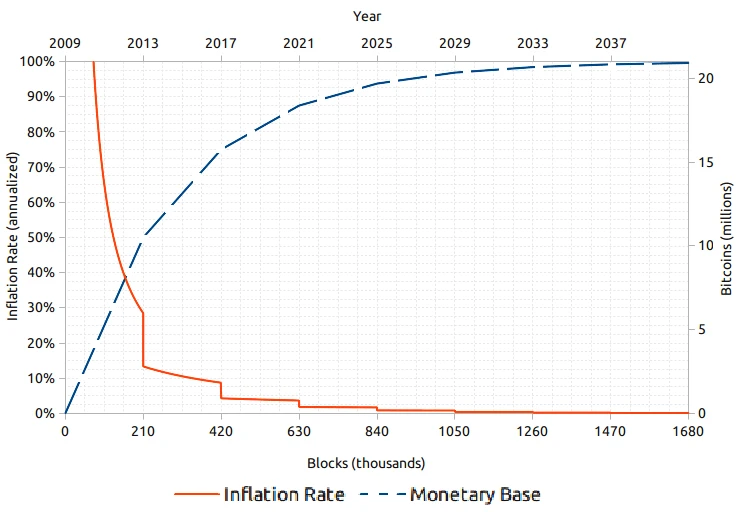
This deflationary characteristic is the fundamental attraction for many Bitcoin holders. While fiat currency supply depends on central banks and precious metal supply is influenced by natural forces, the issuance speed and total supply of Bitcoin have been governed by its underlying protocol since its inception. The combination of fixed total supply and gradually decreasing inflation rate not only creates scarcity but also embeds deflationary characteristics into Bitcoin.
In addition to the obvious supply impact, the notable excitement and anticipation surrounding the Bitcoin halving also stem from its historical association with Bitcoin price increases:
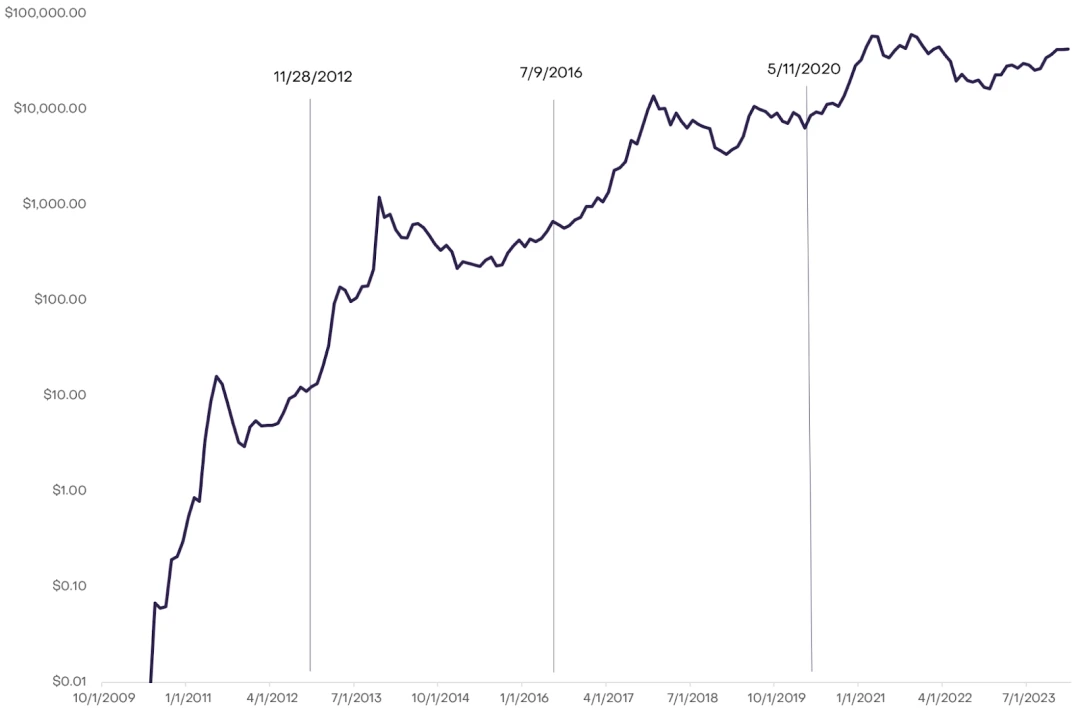
However, it is important to understand that a price increase after the halving is not guaranteed. Given the high anticipation of these events, if a price surge is certain, rational investors are likely to buy in advance, leading to a pre-halving price increase. This brings up frameworks like the Stock-to-Flow model. While it creates visually appealing charts by associating scarcity with price increases, the model overlooks the fact that this scarcity is not only predictable but widely known well in advance. By observing other cryptocurrencies with similar halving mechanisms, such as Litecoin, we can conclude that the latter did not continue to see price increases after the halving. This indicates that while scarcity may sometimes affect prices, other factors also play a significant role.
Unlike attributing post-halving price increases to the halving itself, it seems that these periods coincide with significant macroeconomic events. For example, in 2012, the European debt crisis highlighted Bitcoin's potential as an alternative store of value in times of economic turmoil, leading to its price rising from $12 to $1,100 in November 2013. Similarly, during the initial coin offering (ICO) frenzy in 2016—injecting over $5.6 billion into altcoins—indirectly benefited Bitcoin, raising its price from $650 to $20,000 in December 2017. Particularly noteworthy is during the COVID-19 pandemic in 2020, massive stimulus measures exacerbated inflation concerns, potentially driving investors towards Bitcoin as a hedge, leading to its price rising from $8,600 to $68,000 in November 2021. These periods of increased interest in Bitcoin seem to coincide coincidentally with periods of macroeconomic uncertainty and exploration of alternative investment choices, conveniently occurring around the time of the halving. This pattern suggests that while the halving helps reinforce the scarcity narrative of Bitcoin, the broader economic backdrop and its impact on investor behavior may also have a significant influence on Bitcoin's price.
While the future macroeconomic environment remains uncertain, the impact of the halving on the supply structure of Bitcoin is certain. Let's delve into it further.
Miner Threat
The halving poses a challenge to Bitcoin miners. With Bitcoin issuance reduced from 6.25 BTC per block to 3.125 BTC, miners' income from block rewards is effectively halved. Additionally, expenses are increasing. The hash rate, a measure of the total computational power used for mining and processing transactions on the Bitcoin network, is a key input for calculating miner expenses. In 2023, the 7-day average hash rate surged from 255 EH/s to 516 EH/s, growing by 102%, significantly exceeding the 41% growth rate in 2022. This surge is partly due to the rise in Bitcoin's price throughout 2023 and companies acquiring more efficient mining equipment to cope with favorable market conditions, highlighting the escalating challenges faced by miners. The combination of reduced income and increased costs may put many miners under pressure in the short term.
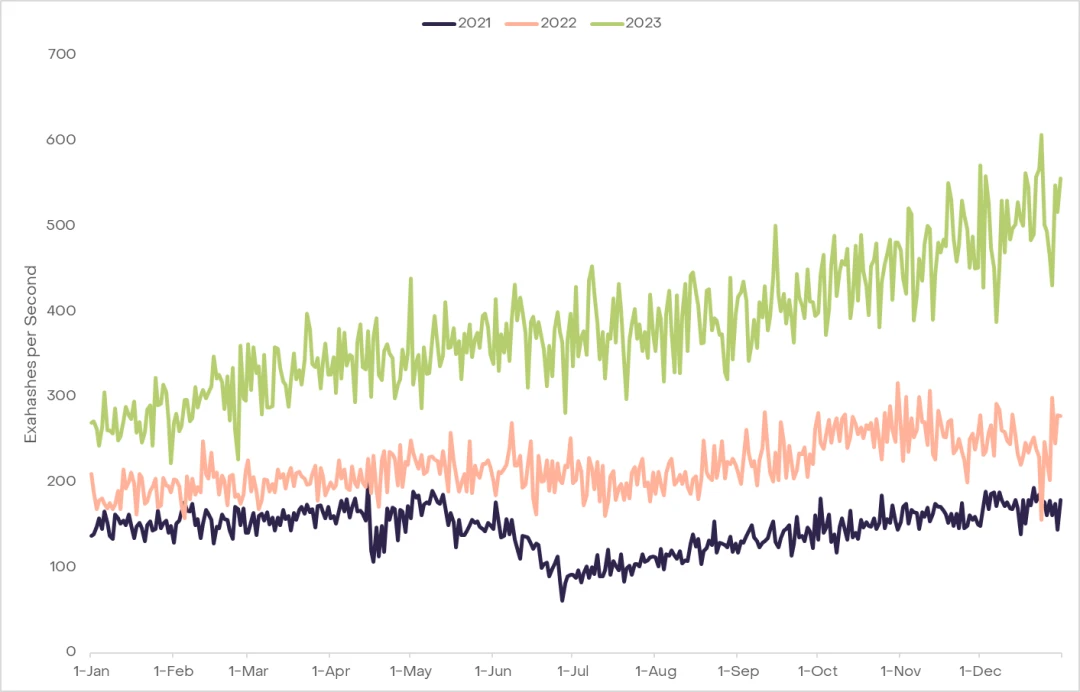
While the situation may seem dire, there is evidence that miners have already prepared for the financial consequences of the halving. In the fourth quarter of 2023, miners noticeably sold their Bitcoin on-chain holdings, possibly to establish liquidity ahead of the reduced block rewards. Additionally, significant fundraising activities, such as Core Scientific's $55 million equity issuance, Stronghold's $15 million equity financing, and Marathon Digital's ambitious $750 million mixed equity financing, underscore the industry's proactive stance in strengthening reserves. These measures collectively indicate that Bitcoin miners are at least well-equipped to deal with the upcoming challenges in the short term. Even if some miners exit the market entirely, leading to a decrease in hash rate, it may result in a mining difficulty adjustment, potentially lowering the cost per coin for remaining miners and maintaining network equilibrium.
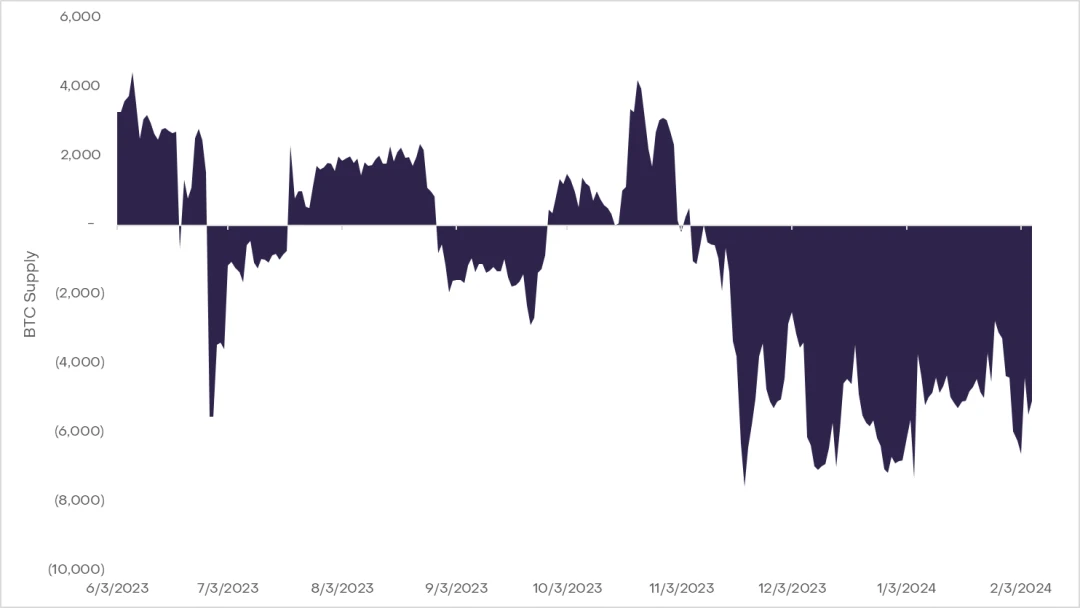
Despite the challenges brought about by the reduction in block rewards, ordinals and Layer 2 (L2) are playing an increasingly prominent role within the Bitcoin ecosystem and have recently emerged as promising use cases. These innovations may provide miners with a glimmer of hope, potentially increasing transaction throughput and boosting network transaction fees.
Ordinals
As we have previously discussed, ordinals represent a groundbreaking innovation within the Bitcoin ecosystem. From simple images to custom "BRC-20" tokens, digital collectibles can be uniquely "engraved" onto specific satoshis (the smallest unit of Bitcoin, as each Bitcoin can be divided into 100 million satoshis). This new practical dimension of Bitcoin has already stimulated significant growth: to date, over 59 million assets have been engraved, bringing miners over $200 million in transaction fees (Exhibit 5).
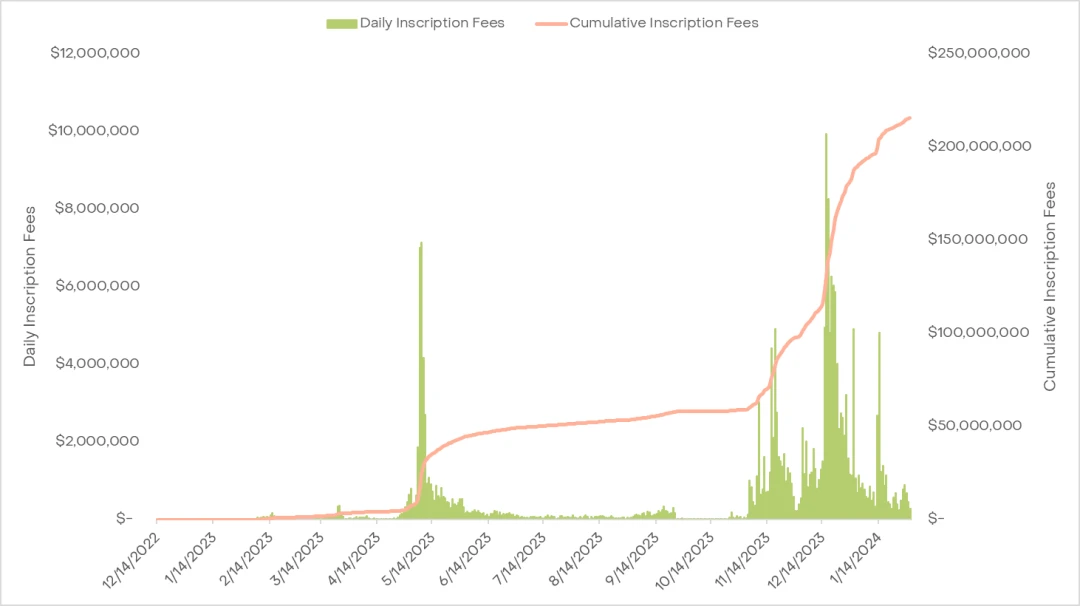
The significant increase in network fees has had far-reaching implications, especially on November 20, 2023, when Bitcoin network transaction fees surpassed those of the Ethereum network for the first time, setting a new record in recent history. Since the introduction of ordinals, miners have received over 20% of total transaction fees from ordinal fees on multiple occasions. Even compared to the total volume of on-chain NFTs, Bitcoin dominated NFT trading volumes in November and December 2023, a development that few could have anticipated at the end of 2022.
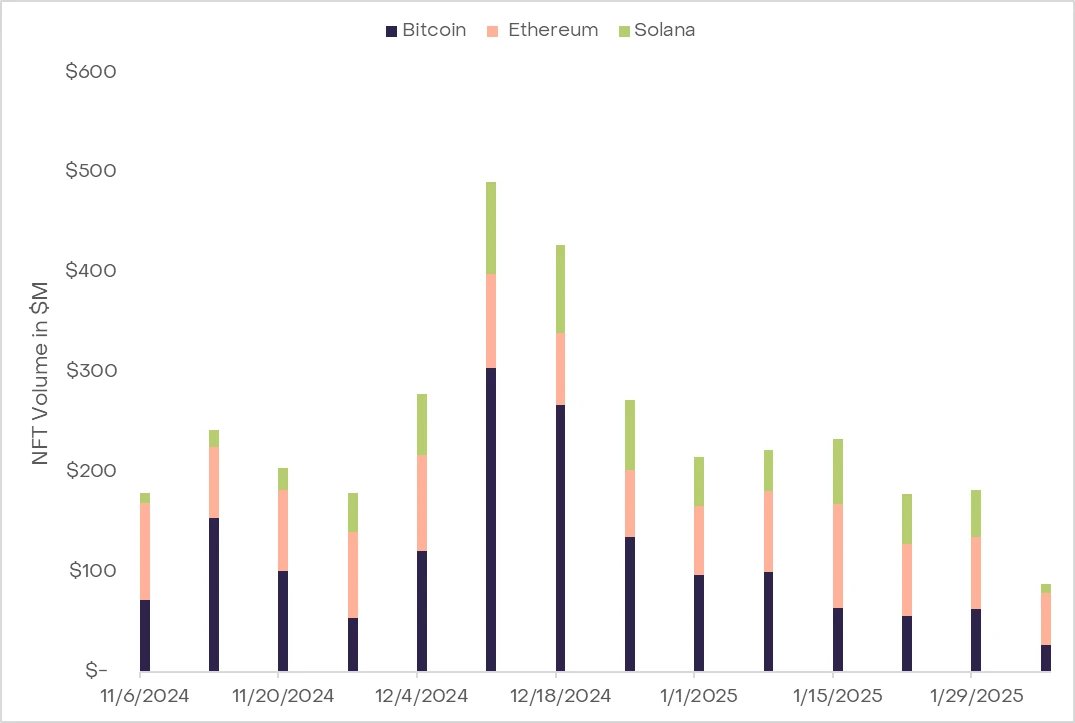
The success of ordinals has had an impact on the Bitcoin network. Over time, as block rewards decrease, the question of how miners are incentivized to secure the network becomes more pressing. With transaction fees from ordinals accounting for approximately 20% of total miner revenue, this emerging trend of ordinal activity provides a new path for maintaining network security by increasing transaction fees, at least for now.
However, this success also highlights scalability challenges, as users will have to bear higher transaction fees. This may hinder users from conducting basic transactions such as transfers. Additionally, Bitcoin's architecture limits programmability, further hindering the development of complex applications that can utilize these ordinals. This situation underscores the need for scaling solutions that can increase throughput for efficient transactions and expand use cases, such as trading NFTs and BRC20 tokens.
In response, the community is exploring approaches such as Layer 2 Rollups, similar to those adopted by Ethereum, to enhance scalability and usability. There is increasing interest in wallets that support Taproot, which offer enhanced privacy and efficiency features, providing greater programmability and indicating concerted efforts to address these challenges. With the increase in transaction fees on the Bitcoin main chain, the development of L2 networks becomes a possible step forward.
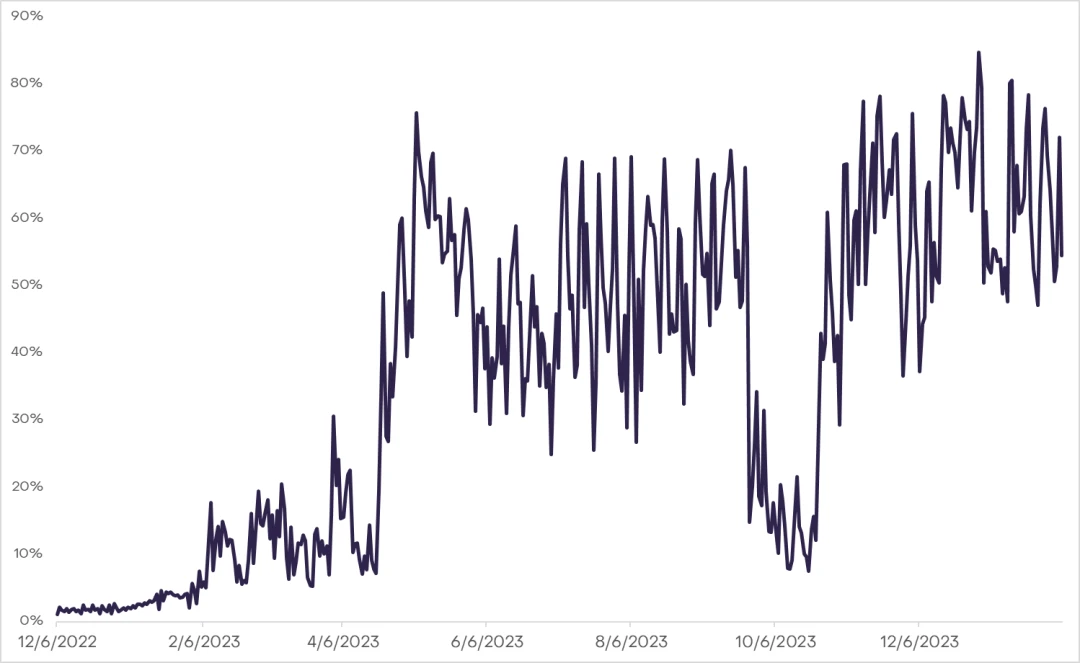
As discussed in our previous article on ordinals, the revival of ordinals and the introduction of BRC-20 tokens have sparked a cultural shift within the Bitcoin community, attracting a new wave of developers excited about the possibilities for network expansion. This shift can be considered one of the most significant developments for Bitcoin, as it not only diversifies the ecosystem but also injects new perspectives and innovative projects into the community, driving future development.
In existing Layer 2 (L2) solutions, some have been quietly laying the groundwork for this evolution for years. Stacks is a platform that brings fully expressive smart contracts to Bitcoin. It facilitates the development of various decentralized applications (dApps) that leverage Bitcoin's security, enabling functionalities ranging from DeFi to NFTs. These dApps represent the forefront of Bitcoin's transition to a multifaceted ecosystem, capable of supporting a variety of blockchain-based applications.
ETF Fund Flows
In addition to fundamentally positive on-chain fundamentals, Bitcoin's market structure appears favorable for post-halving prices. Historically, block rewards have brought potential selling pressure to the market, potentially leading to all newly mined bitcoins being sold, affecting prices. Currently, mining 6.25 bitcoins per block equates to approximately $14 billion annually (assuming a Bitcoin price of $43,000). To maintain the current price, corresponding buying pressure of $14 billion annually is needed. After the halving, this demand will be halved: mining only 3.125 bitcoins per block equates to a reduction to $7 billion annually, effectively alleviating selling pressure.
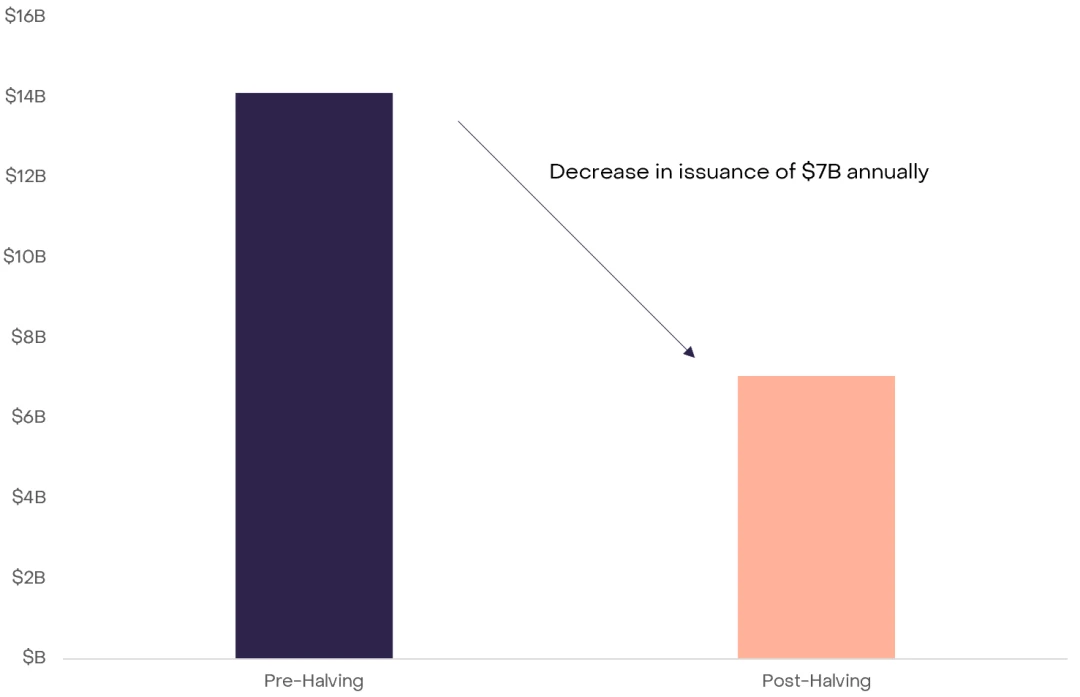
ETFs generally provide a pathway for broader investors, financial advisors, and capital allocators to gain exposure to Bitcoin, and over time, this may lead to increased mainstream adoption. After the approval of spot Bitcoin ETFs in the United States, the net inflows into these new products in the initial 15 trading days amounted to approximately $1.5 billion, almost equivalent to three months of potential post-halving selling pressure. While the initial surge in net inflows in the first few days may be due to initial excitement and pent-up demand, assuming stable net inflows in a continued and mature Bitcoin ecosystem, ETF liquidity may provide some offset to the ongoing selling pressure from mining issuance. Sensitivity analysis of daily net inflows from $1 million to $10 million suggests that at the higher end, the reduction in selling pressure may reflect another halving effect, fundamentally reshaping Bitcoin's market structure in a positive way.
Conclusion
Bitcoin has not only weathered the storm of the bear market but has also challenged outdated perceptions with developments over the past year. While it has long been hailed as digital gold, recent developments indicate that Bitcoin is evolving into something more significant. Driven by the surge in on-chain activity, supported by significant market structure momentum, and endorsed by its inherent scarcity, Bitcoin has shown its resilience. The Grayscale research team will closely monitor its developments before and after the halving in April 2024, as we believe the future of Bitcoin is bright.
免责声明:本文章仅代表作者个人观点,不代表本平台的立场和观点。本文章仅供信息分享,不构成对任何人的任何投资建议。用户与作者之间的任何争议,与本平台无关。如网页中刊载的文章或图片涉及侵权,请提供相关的权利证明和身份证明发送邮件到support@aicoin.com,本平台相关工作人员将会进行核查。




